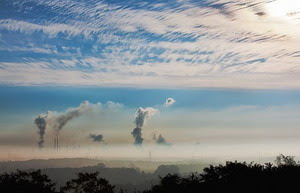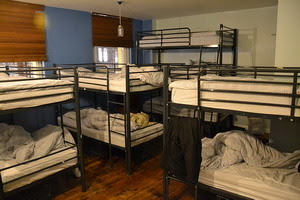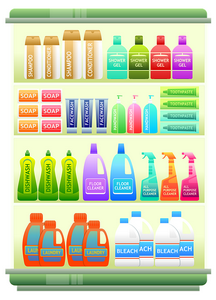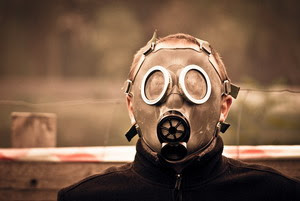
California has a problem – air pollution. Now for the bad news. Sacramento, Los Angeles, and three other central valley cities hold the top spots for the worst ozone pollution in the country. And don’t think that you are better off up in the foothills. Placer, El Dorado, and Sutter counties are all just as bad. The pollution just piles up against the foothills and the sun bakes it into this nasty ozone soup. Ozone is a toxic corrosive gas that literally burns the lungs. It kicks up asthma, heart disease, and get this, it creates systemic inflammation that promotes obesity and diabetes. You don’t have to eat badly to get fat here in Sacramento, you just have to breathe.

Where does all this pollution come from? Looking at carbon dioxide emissions, the number one evil is cars and trucks. There are 39 million Californians, and that means a lot of cars and trucks – 27.7 million as of 2012. We dump thousands of tons of airborne pollutants into our skies every day. Read that again – Thousands Of Tons Every Day. Then we try to breathe that air. That is 42% of the source of our emissions. Another 24% is from power plant emissions and 23% is from industrial emissions. Residential emissions account for only 6%, commercial buildings only 4%, and amazingly agriculture accounts for only 1% of California’s emission problems.

Why is California so bad compared to the rest of the country? Well it comes down to topography and weather. Our smoggy cities sit in basins surrounded by hills. This traps the smog in place and it has nowhere to go. Add on top of that all our sunshine, and that trapped soup of pollutants gets converted into poison corrosive gas. The sunlight adds the energy necessary for the hydrocarbon pollutants and the nitric oxides to interact to create the O3 super oxide radical. At ground level that is a big problem because it burns living tissue. It not only fries us, but also damages plants causing crop losses. On the other hand, ozone high up in the atmosphere is a good thing. This forms a protective layer around the earth that absorbs the bulk of the harmful ultraviolet rays that would otherwise sterilize the earth. You probably have heard of the ozone layer and the hole in it caused by certain man made chemicals.
That is a bit of the story about the more common air pollution we hear about. But anyone with allergies will tell you there is more to be concerned with in our air. Pollens are everywhere. Sacramento, the city of trees, is also a city of pollen as a result. Plus with our luxurious use of landscape water, we have an equal problem with molds and mildew. All of these whip up our immune system and make it cranky. Asthma is an obvious example, but since most of the lung is only one cell thick and surrounded by blood vessels, anything getting into the lungs is very quickly getting into our whole blood system. These irritants trigger issues almost anywhere in the body.

We try to hide indoors to get away from the pollution, but it just follows us inside. In fact, indoor air pollution is generally 2 to 5 times worse than outside air. The EPA considers indoor air pollution in its top 5 most dangerous environmental risks to human health. The worst offenders are the fire retardants in beds and furniture, air fresheners and candles, chemicals in cleaning products, and weird things like the ink in inkjet printers. Of course if you have pets you have to add in pet dander and hair. Then there are all the little critters like mites and other tiny bugs. Mold is also a favorite indoor air pollutant, particularly around the head of the beds, under sinks, and anywhere moisture can get to. Cooking, smoking (anything), body products, fragrances, the list goes on, all add to the burden on our lungs and immune system.
Okay, enough already! We are lucky we make it through the day without coughing our lungs out. Actually, lots of my patients do spend a lot of time coughing. Sacramento is estimated to have over 200,000 asthmatics, and that number keeps climbing. I can’t tell you how often I have to turn down the sensitivity to various airborne substances in patients. During the worst times of the year it seems more than half of my patients have some sort of lung or sinus trouble.

So what can we do about it? I have written previously about just getting rid of obvious poisons in our home environment, like air fresheners, soaps with fragrances, toxic cleaning products, and unnatural personal hygiene products. I have even gone so far as to formulate many replacements for such products. But the burden of the outside pollutants getting inside requires a different approach. We have to clean up the air itself. I am talking about using air purifiers in our home and offices.
Most of us here in Sacramento have air conditioning, and that usually includes some sort of air filter. Unfortunately those air filters barely catch the “tip of the pollution iceberg”. They are for catching dust, that’s about it. They have to let a large amount of air flow through them, so they can’t catch the little stuff. That would slow down the air draw so much the air conditioner would not work. No, we need specialized equipment to do this job. I was surprised just how many steps are needed to clean our household air. I found products that had as many as 9 different cleaning steps in their air purification process. The gold standard for removing air born particulates are the HEPA filters (High Efficiency Particulate Absorber.) The clean out the dangerous 2.5 micron size particles associated with so many health problems. A good HEPA filter will clean out particles down to 0.03 microns, which removes 99.97% of the particulate matter in the air. But this does nothing for volatile organic compounds, viruses, molds, noxious odors, fungi, and what not.

A good filter system will start with a dust filter, then an activated charcoal filter (for the VOCs), then a HEPA filter, then some sort of UV or ionization process to kill bacteria, viruses, molds, and fungi. As I investigated the field, I found a wide variety of products available for cleaning the air. Prices varied wildly as did the technology used. At this point there appear to be a number of inexpensive products that use the more sophisticated technology that used to be found in units that would cost upwards of a thousand dollars. Now you can find a good unit for around $130 to $250. Here is the one I found on Amazon that looked like the best match of features and price point.

Other considerations to be aware of are the cost of replacement filters. In some cases I found replacements that would cost over $100 apiece, while on the economical end they might be one quarter that price. Another consideration is how many square feet of living space the unit was rated for. There is an actual government rating system called CADR (Clean Air Delivery Rate), so comparison between products is pretty straight forward. The unit I bought is rated for 350 square feet. I found a unit good for 800 square feet for about twice the price, but they would not ship it to anywhere in California for some reason.

Honestly, I was not tuned in to just how bad the situation was for us here in Sacramento until I started doing research for this article. My interest was triggered by a research paper I read a month ago about PM 2.5 causing obesity. That stands for particulate matter of 2.5 microns. That was interesting at the time, but last week I came across more information about PM2.5 specifically about Sacramento. We are especially high in this type of pollution because of the high number of cars in our area. This started me madly researching and ultimately buying air purifiers for my home and office. I recommendeveryone in this area do the same. What is the point of eating well, exercising, and taking a boat load of supplements if I am poisoning myself with every breath?
Take care,
David
